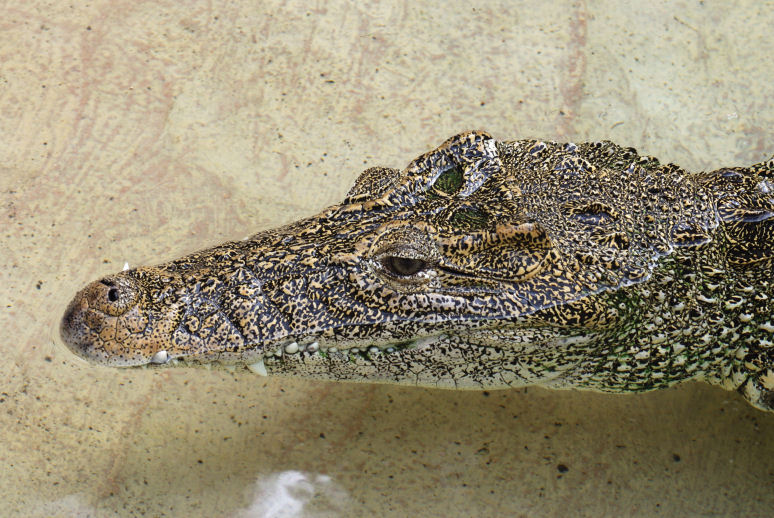Paleontology in a Sink Hole: Spring Break Edition
Last week, I spent time at the Bahamas Natural History Symposium in Nassau, Bahamas. Seeing policy makers, ecologists, educators, geologists, and anthropologists come together was awesomely inspiring for the future of The Bahamas, a wonderful place with a magnificent natural environment! If you are fossil hunting ,The Bahamas might not immediately come to mind as a paleontological destination, but you would be wrong! The Bahamas is a large carbonate platform that may have started forming as early as the Cretaceous. The carbonate rock was exposed to the air during the Pleistocene, and during this time sand dunes lithified and formed the islands. During the last glacial maximum, the Bahamas bank was exposed greatly increasing the landmass and connectivity of the Caribbean, fostering biotic interchange between the islands. Now this shelf is submerged again so the islands remain isolated. The limestone that the islands are based on is porous and can be dissolved, so during glacial maxima, weathering of this limestone lead to features that make these islands so special today—underground caves, sink holes, and pits.

When sink holes and caves fill with water, these underground networks become submerged ethereal mazes that preserve unique life forms. Besides looking beautiful, blue holes as they are called, become a quiet resting place for anything –animal or human—that might end up in there. The blue holes of Abaco in The Bahamas have preserved a rich paleontological and anthropological history spanning thousands of years. On Great Abaco Island, there are a few of these astonishing features, but especially notable is Sawmill Sink. Sawmill Sink, one of the most famous blue holes in The Bahamas, contains the bones of numerous vertebrates that no longer live on the islands or are completely extinct. It is a spectacularly preserved graveyard of tortoises, birds, and crocodiles. Even human bones have found in Sawmill Sink, a remnant of the original prehistoric inhabitants of The Bahamas, the Lucayan people. Since these underwater caves were not always filled with water—as I previously mentioned, sea level was lower—the Lucayans were able to bury individuals in these limestone caves. The bones in the cave are perfectly preserved and also contain organic collagen, so they can be dated using carbon-14. The human remains in Sawmill Sink date from 1050 to 920 calendar years before present, making this the earliest evidence of human inhabitance of the Bahamian Archipelago.

Up to 54 individual crocodile specimens have been found in Sawmill Sink that are dated to 2780 years before present, predating any human occupation of The Bahamas. The species of crocodile is Crocodylus rhombifer, the Cuban crocodile. There are currently no crocodiles in The Bahamas, and the Cuban crocodile is limited only to a very small region of Cuba. How the Cuban crocodiles found in Sawmill Sink are genetically related to the current Cuban population remains unknown, but it is quite possible ancient DNA can be obtained from the well preserved specimens. Additionally, why did they go extinct from most of the West Indies? It is supposed that the extinction was caused by human encroachment and hunting, which make sense, because C. rhombifer bones are found in archaeological middens, along with other extinct tortoises that would have been a tasty meal, throughout the islands of The Bahamas.

Birds, such as the now extinct Bahamas caracara, and the Bermuda petrel (now only in Bermuda) are found preserved in blue holes indicating the avifauna of the Caribbean was once very different and perhaps a lot more diverse. These fossil deposits preserve a unique time in geological history when both humans and large vertebrates were inhabiting space-limited environments. Detailed study of these fossils can potentially help us see at a fine-scale the impact human settlement can have on biodiversity. Since blue holes are so spectacular, there are a myriad of great photographs out there, specifically through National Geographic. I suggest you take a look because the images are just fantastic.
Now if you’ll excuse me I am off to spring break. Paleontologists need some beach time too!
Additional reading:
